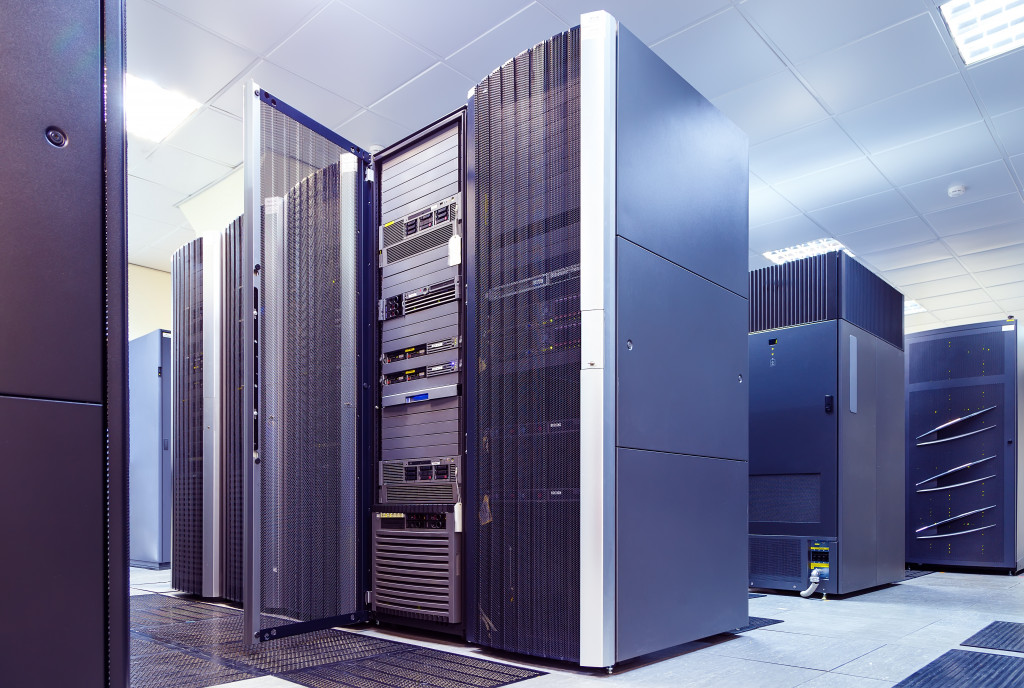A data center is a critical part of any business. According to marketing company Tech Target, data centers are essential parts of any business as almost every worldwide company is governed by computers. It houses your most important information and keeps your business running smoothly.
But before you launch your business, you must ensure your data center is secure. Here are some tips to help you do just that.
Evaluate Your Physical Security risks
The first step to keeping your data center secure is to evaluate your physical security risks. You need to consider several things, such as the building itself, the people who have access to the data center, and the equipment in the data center. You must also consider the surrounding area and how it could impact your data center’s security.
The building should be secure, with access control measures in place to ensure only authorized personnel can enter. The data center should also be equipped with cameras and alarms to deter and detect unauthorized activity.
The people who have access to the data center need to be screened and trained on security protocols. They should also be given access only to the areas they need to enter, and their access should be monitored.
The equipment in the data center needs to be adequately secured, too. Servers and other critical equipment should be kept in locked cabinets or rooms, and only authorized personnel should have access to them. Networking equipment should also be properly secured to prevent unauthorized access.
Once you’ve evaluated your physical security risks, you need to implement access control measures which means creating a system that controls who has access to the data center and what they can do once they’re inside. There are several ways to do this, such as using badge readers, biometrics, and security guards.
Install Cooling Systems
Data center cooling systems are essential for keeping the equipment in the data center from overheating. Overheating can cause a number of problems, such as data loss, equipment damage, and even fires.
There are a few different types of cooling systems you can choose from, such as air conditioning units, water-cooled systems, and chilled-water systems.
- Air-conditioning units are the most common type of cooling system, and they work by circulating cool air through the data center.
- Water-cooled systems use water to cool the air inside the data center. These systems are more efficient than air-conditioning units but are also more expensive.
- Chilled-water systems use a combination of water and air to cool the data center.
You’ll need to decide which type of system is best for your data center based on some factors, such as the data center’s size, the climate, and the equipment housed in the data center. Once you’ve chosen a cooling system, you need to have it installed by a professional. This is important because the cooling system needs to be appropriately sized and installed to work correctly.

Deploy Firewalls and Intrusion Detection Systems
Another critical step in keeping your data center secure is to deploy firewalls and intrusion detection systems (IDS). Firewalls control traffic between networks and can prevent unauthorized access. IDSs can detect threats and anomalies in network traffic and take action to defend against them.
When choosing suitable systems to deploy, you need to consider the type of traffic that will be passing through them. There are three main types of traffic:
- Internet traffic: This originates from the internet and is destined for the data center.
- Intranet traffic: This originates from within the data center and is destined for another system inside the data center.
- Extranet traffic: This originates from outside the data center and is destined for a system inside the data center.
You also need to consider the type of connection you’re using. IPsec and SSL are the two most common types of connections. IPsec is typically used for site-to-site VPNs, while SSL is used for remote access VPNs.
Once you’ve chosen a firewall and IDS, you need to have it installed by a professional. This is important because firewalls need to be configured properly to work correctly.
Educate Your Employees
Finally, you need to educate your employees about security risks and procedures. They should know how to identify potential threats and respond if an incident occurs. They should also be familiar with the access control measures you’ve put in place and learn how to follow them properly.
When choosing employees to have access to data centers, it’s important to consider their security risk level. You don’t want to give access to someone who may be a security threat or someone who is not familiar with the security procedures in place. It’s also important to consider the level of access they need. Employees who only need access to the data center for administrative purposes should not have the same level of access as employees who need access to the data center for technical purposes.
You should also consider their job function and how that relates to the data center. For example, if you’re hiring a systems administrator, you’ll need someone who has experience working with networking equipment and knows how to configure and troubleshoot firewalls and IDSs.
Following these four tips can help keep your data center secure before launching your business. Physical security is essential, but it’s not the only thing you need to worry about. You must also implement access control measures, deploy firewalls and IDSs, and educate your employees about security risks and procedures. By taking these steps, you can help ensure that your data center is safe and secure.